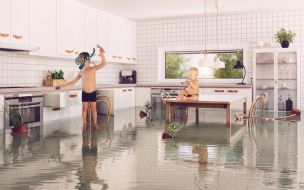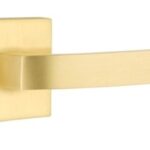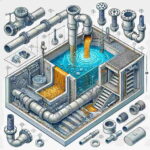The Right Way to go About Water Damage Restoration

Most of the cost for a typical water damage restoration service is in sourcing the new material and installing it. Often there is a great deal of urgency to get the wet stuff removed (i.e. drywall, flooring ceiling material) because the longer it remains, the greater the risk of mold growth. If there is mold, the property is now at risk of degradation from it, which means one problem has been traded for another.
Minimizing the damages
The traditional practice of removing everything saturated as soon as possible developed because there was simply no viable, low risk alternative. Whenever an attempt was made at letting things dry without complete removal, some things would not dry quickly enough before mold spores appeared. Aggressively placed space heaters and fans would dry some of the materials on time, but there would almost always be more water lurking underneath that would not get detected by visual inspection. Once the mold arrived, it would eat away at the drywall from the inside. This kind of outcome was not financially sustainable for insurance companies and restoration contractors. All of a sudden, straightforward water damage restoration jobs that required nothing more than removal and replacement could transform in to difficult mold remediation jobs.
Because this hidden mold is not detectable upon a visual inspection, it is notorious for going undetected, sometimes for decades. Suppose the initial water damaging event happens, and a modest amount of mold starts to grow behind one wall during a wet spring. Over the summer and fall things dry up. Now the mold becomes dormant and remains inactive until moisture re-appears in the winter, so the cycle starts over again. All of this meant that water damage restoration protocols became a matter of public health and safety. If every water damage restoration contractor in America simply removed everything that got wet, as opposed to leaving any amount of it do dry, then there would be fewer schools, offices and private homes left at risk of having mold in them. This would translate into a safer, happier, heathier society.
The heat revolution
Very recently, more precise methods for detecting trapped water within walls, as well as techniques for quicker drying, have reduced the amount of removal and reconstruction required to make a building safe. A typical modern water damage restoration job will involve the use of vacuum suction to remove the standing water in record time. After this is done, thermal imaging devices are used to detect where the highest levels of saturation are. High heat is introduced, sometimes using glycol and sometimes using ventilation to create convection currents. These interventions allow for very fast evaporation because the glycol itself evaporates at cooler temperatures. When this is done correctly, everything will have the opportunity to dry before mold spores can set in. This means that only the material that was too saturated to remain structurally viable must be removed, which is better than having to remove something that is otherwise safe just because it is wet and poses a mold risk. The reduced workload that results means fewer labor hours billed and fewer materials invoiced for each job.
These new methods introduce an additional element of safety too. Traditionally, mold abatement required the physical removal of anything that contained spores. Modern mold remediation has gone away from this in favor of using aggressive heat treatments to eradicate the mold. When a colony of spores is exposed to intense heat, it will die. This means that when water damage restoration is heat based, the heat is doing two things: it is drying everything so that mold cannot grow, while also making it too hot for any trace amounts of existing mold to survive. The net result is a safe, dry, mold free home where reconstruction costs are at an absolute minimum.
Unfortunately, these improvements in water damage restoration services will not resolve everything. Heat drying will not make damaged electrical circuits functional again, nor will it eradicate the danger of things like air conditioning fluids dissolving into the saturated objects. Regardless of the scale sand severity of this, the key thing is that more of your resources will be freed up to solve these bigger issues, because the process of drying everything has become easier. This is a big leap forward in the domain of dealing with water damage, not to mention mold remediation.







